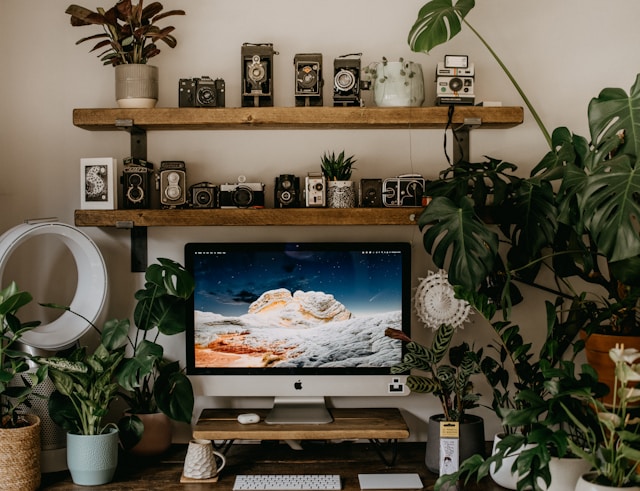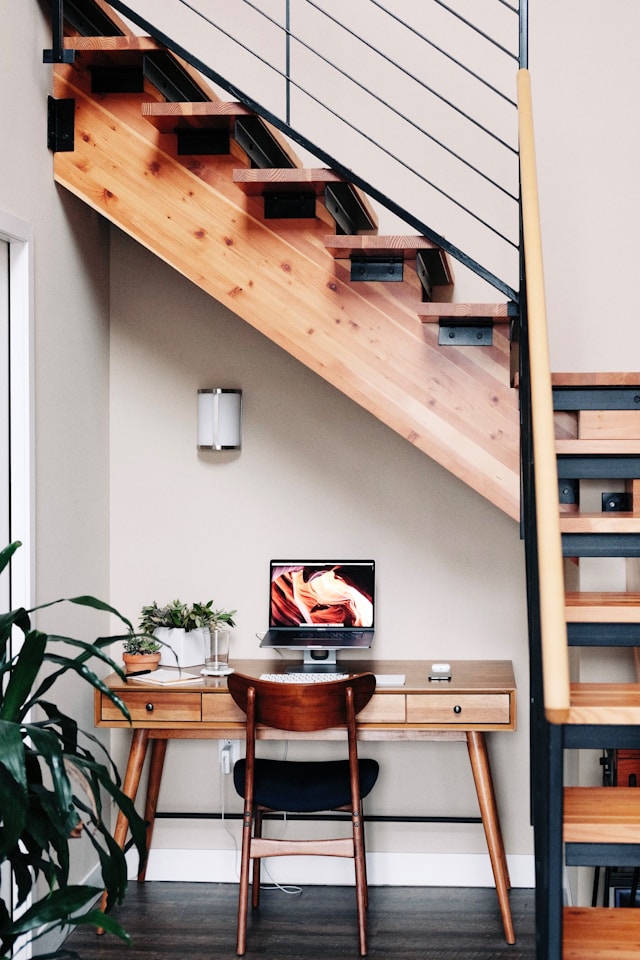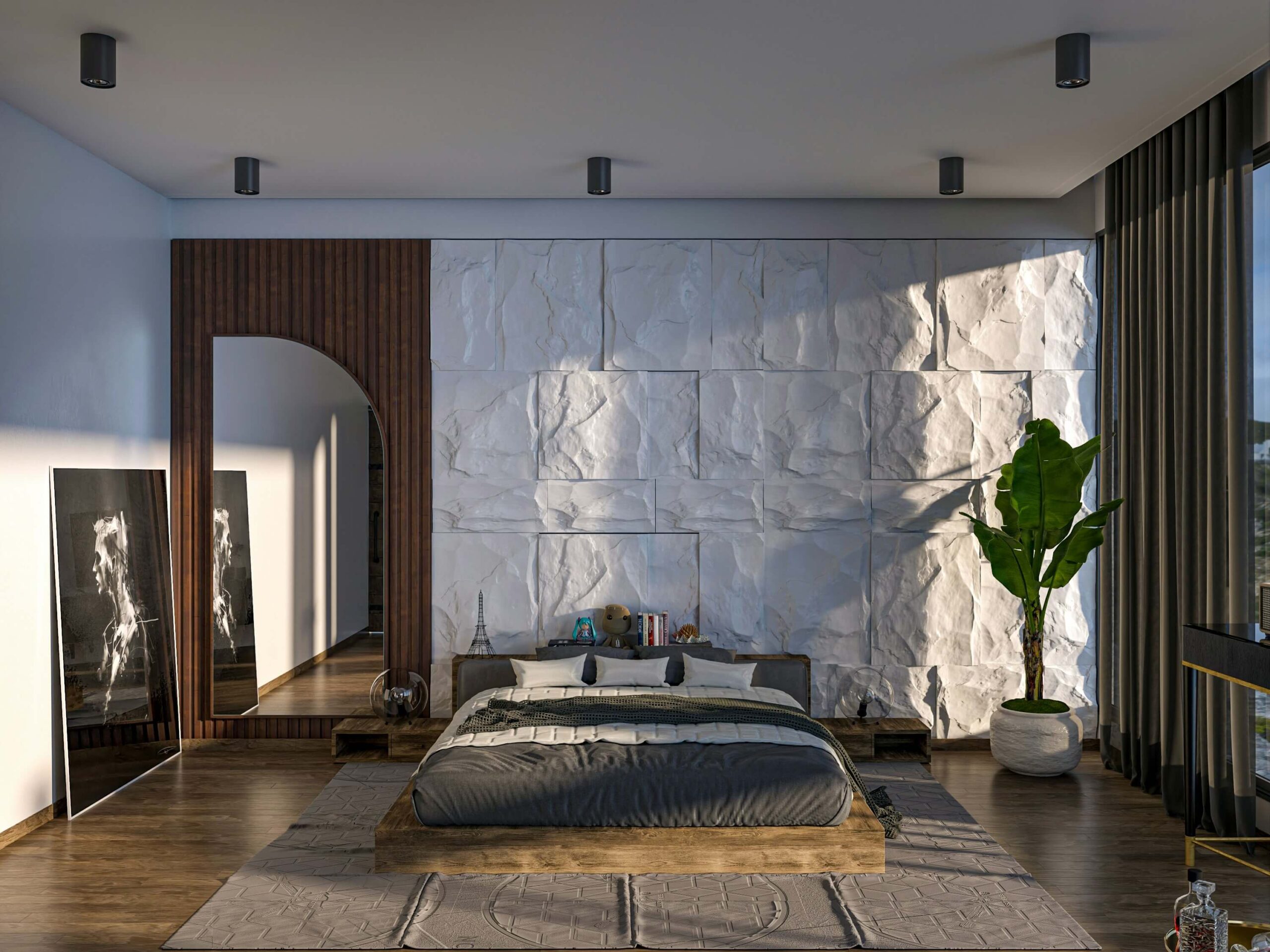Introduction: The Home Office Revolution
In recent years, we have witnessed a radical transformation in how we work. The home office has gone from being a luxury or exception to becoming a permanent reality for millions of professionals. But creating a truly functional and inspiring workspace at home goes far beyond simply placing a desk and chair in any corner.

Research shows that professionals with well-planned home offices are 20% more productive and report 35% fewer work-related pains. In this comprehensive guide, we’ll explore everything from ergonomic fundamentals to creative solutions for small spaces, helping you create an environment that combines productivity, health, and personal style. Get ready to transform your work nook into a space that stimulates creativity, protects your health, and reflects your unique personality.
1. Ergonomics: The Science of Comfort
1.1 The Anatomy of the Perfect Chair
Investing in a quality ergonomic chair is the most important decision for your home office. An inadequate chair can cause cumulative damage to your spine that only manifests after months or years of incorrect use. Essential features include an adjustable lumbar backrest that perfectly follows the natural curve of your spine (especially in the lumbar region), a seat with adjustable depth (38-45cm) for full thigh support without pressure behind the knees, and adjustable armrests that keep your shoulders relaxed in a natural position. Breathable materials like mesh are ideal for warm climates, while more padded fabrics may be better for heavily air-conditioned environments. The ideal height allows your feet to rest flat on the floor with knees bent at 90 degrees—if your feet don’t comfortably reach the floor, consider using an adjustable footrest.
📌 Table: Technical Specifications for Ideal Ergonomic Chairs
| Component | Ideal Characteristics | Benefits |
|---|---|---|
| Lumbar Support | Adjustable height (15-25cm), anatomical curve | Reduces 40% pressure on spinal discs |
| Seat | Depth 38-45cm, rounded front edge | Prevents thigh compression |
| Armrests | Adjustable height (20-25cm from seat surface) | Keeps shoulders relaxed |
| Base | 5-point with floor-appropriate casters | Stability and mobility |
1.2 The Revolution of Adjustable Desks
Height-adjustable desks represent one of the greatest ergonomic advancements for modern workspaces. Studies from Cornell University show that alternating between sitting and standing positions during the workday reduces back pain by 54%, improves blood circulation, and can increase concentration by up to 12%. When standing, your monitor should be positioned so the top of the screen is at or slightly below eye level, with arms forming a 90-degree angle while typing. For those who can’t invest in an electric desk, desk converters (risers placed on conventional desks) offer an economical solution, though with height limitations. Regardless of the type chosen, the work surface should be at least 80cm wide to comfortably accommodate essential equipment.
1.3 The Science of Ideal Lighting
Poor lighting is a leading cause of eye strain and headaches for home office professionals. The perfect setup combines three layers of light: natural, ambient, and task lighting. Position your desk perpendicular to the window to utilize natural light without creating screen glare. For ambient lighting, prefer ceiling fixtures with a color temperature between 3000-4000K (varying from warm white at night to neutral during the day). Task lighting, such as directional lamps with 500-700 lumens, is essential for reading physical documents. A common issue is excessive contrast between bright monitors and dark surroundings—the solution is bias lighting (LED strips behind the monitor) to balance brightness and reduce eye strain during nighttime work.
2. Smart Design: Where Form Meets Function

2.1 The Psychology of Colors in the Workspace
The colors in your home office have a measurable impact on your emotional state and productivity. Blue tones, especially blue-greens, are proven best for tasks requiring prolonged concentration, increasing focus by up to 35%. Soft greens create a calming atmosphere ideal for stressful work or long hours. Light yellows and oranges stimulate creativity but should be used sparingly as accents. Intense reds boost immediate attention but may cause anxiety if used on large surfaces. For frequent video calls, an accent wall in earthy or blue tones provides a professional, pleasant background. Remember, the “right” color varies by personality and work type—test samples before painting entire walls.
2.2 Multisensory Elements
A truly effective home office engages all senses. For touch, combine textures: natural wood brings warmth and connection to nature, textiles add tactile comfort, while metal or glass surfaces offer a modern, professional touch. For smell, peppermint essential oil diffusers boost alertness in the morning, while lavender helps relax after intense meetings. Plants like Peace Lilies or Snake Plants purify the air while adding life. For sound, consider decorative acoustic panels or bookshelves to dampen echoes in empty rooms. Small water features provide relaxing white noise, while natural fiber rugs reduce footstep noise on hard floors. These elements create an environment that nurtures both productivity and well-being.

2.3 Smart Layouts for Every Space
The ideal layout varies drastically with available space. For minimal areas (up to 4m²), the solution lies in verticalization: floor-to-ceiling shelves, wall-mounted or foldable desks, and strategic mirrors to visually expand the space. In medium spaces (4-8m²), transparent partitions create separation without blocking light, while layered lighting (ambient, task, and accent) defines functional zones. For those with over 8m², consider distinct areas: a main work zone, a reading/relaxation nook with a comfy chair, and a dedicated spot for virtual meetings with a planned background. Regardless of size, the golden rule is maintaining at least 90cm of free space around the chair for comfortable movement and easy access to files and equipment.
3. Innovative Solutions for Compact Spaces
3.1 Invisible Home Office
For those needing their office to “disappear” after work hours, “invisible” solutions are ideal. Transformer cabinets hide complete workstations behind elegant doors, often integrating shelves and organizers. Sliding panels can reveal whiteboards, inspiration boards, or even computer screens when needed. Modular units on casters allow reconfiguring space as needed—a bookshelf becomes a room divider, a sideboard transforms into a meeting table. For tiny apartments, bed drawers with built-in offices or TV panels with integrated workspaces maximize every centimeter. The secret is choosing multifunctional furniture that blends seamlessly into existing decor when not in use as an office.
3.2 Space-Efficient Technology
The right equipment choices can drastically reduce your home office’s footprint. Ultrawide monitors (like the LG 34WN80C-B) replace two conventional screens, saving space and reducing cables. Slim wireless keyboards (like the Logitech MX Keys) offer comfortable typing without occupying valuable desk space. Webcams with built-in lighting (like the Razer Kiyo Pro) eliminate separate ring lights. VESA mounts fix monitors to walls or desk edges, freeing up surface space. Mini PCs like the Intel NUC or Mac Mini deliver computing power without the bulk of traditional towers. For storage, compact external SSDs (like the Samsung T7) outperform bulky external HDDs. Each tech choice should consider not just performance but how it integrates into available space.
4. Healthy Routine: Beyond Physical Space
4.1 Micro-Habits for Better Performance
Strategic mini-breaks throughout the day work wonders for productivity and health. Every 30 minutes, stand up for at least 2 minutes—use this time to stretch your neck and shoulders gently, practice the 20-20-20 rule (look at an object 6 meters away for 20 seconds to rest your eyes), and sip water to stay hydrated. Every 2 hours, take a longer break: a 5-minute walk around the house or balcony boosts circulation, deep breathing exercises (4-7-8: inhale 4s, hold 7s, exhale 8s) reduce stress, and a healthy snack (fruits, nuts) maintains steady energy. These micro-habits prevent muscle pain, eye strain, and the common afternoon productivity slump.
4.2 Healthy Transition Between Work and Home
Clear start/end-of-day rituals are essential for remote workers. Your morning ritual might include turning on a specific light (like a desk lamp) signaling “work mode,” preparing your favorite drink (tea, coffee, or infused water) in a special mug, and listing 3 top priorities for the day in a dedicated notebook. At day’s end, physically tidy your desk (storing documents, wiping the surface), jot a quick checklist for tomorrow (with 3 main tasks), and perform a symbolic “shutdown” action (like turning off the special light or closing the office door). These rituals create psychological boundaries between work and personal life, reducing burnout risk and improving family time quality.
Conclusion: Creating Your Productivity Sanctuary
Transforming your home office into a truly functional and inspiring space is an ongoing process of experimentation and adjustments. Start with ergonomic fundamentals (chair, desk, lighting), then add layers of personality and tech that meet your specific needs. Remember, the perfect space evolves with you—don’t fear changes as you discover what works best for your body, work, and lifestyle. Investing in a well-planned home office pays off in productivity, health, and professional satisfaction. Start today by assessing your current setup, identifying 3 priority improvements, and implementing one change at a time. Your future self—with less back pain and more achievements—will thank you.




